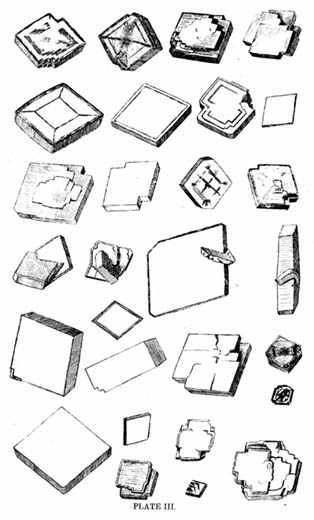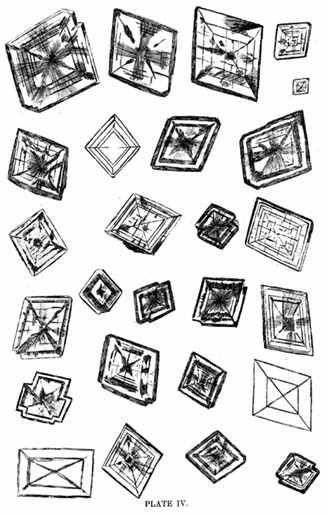
|
268 |
|
and also the fine tapering barite crystals. In breaking
open these flinty clay balls it is a difficult matter to avoid
jarring and breaking the slender crystals within. There are
hundreds of these concretions in sight, although but few contain
the barite, and the matter of collecting barites is reduced to
faithfulness in opening numerous concretions. Sometimes these
septaria are so hollow and bristling with crystals that the whole
is very geodelike.
Out of many hundred crystals but few doubly
terminated ones were secured. The crystals are often etched in a
remarkably clean-cut and beautiful manner, the etchings all
pointing in a given direction and with definite and unvarying
relation to the axes.
It was the author's good fortune to have visited
this region before it became known to collectors, and in this way
he secured 'first choice of these beautiful crystals. A more
technical study of our western Barites has been begun and will be
ready for publication at another time.
December 18, 1896.
PLATE II, Figs. I to 6.--A group of barite crystals from the Bad Lands, sketched natural size. The radiated form shown in Fig 5 is occasionally met. Fig. 6, the form of crystal found in the white and transparent barite of the region. which is rather rare. The others are of the amber-colored type. The superficial characters are apparent without descriptions.
PLATE III.--A grout) of barite crystals from the "Diamond Field," of Gage county, Nebraska, magnified about three diameters. All viewed by reflected light.
PLATE 1V.--A group of barite crystals from Gage county, Nebraska, magnified about three diameters. All viewed by transmitted light.






© 2000, 2001 for NEGenWeb Project by Pam Rietsch, T&C Miller